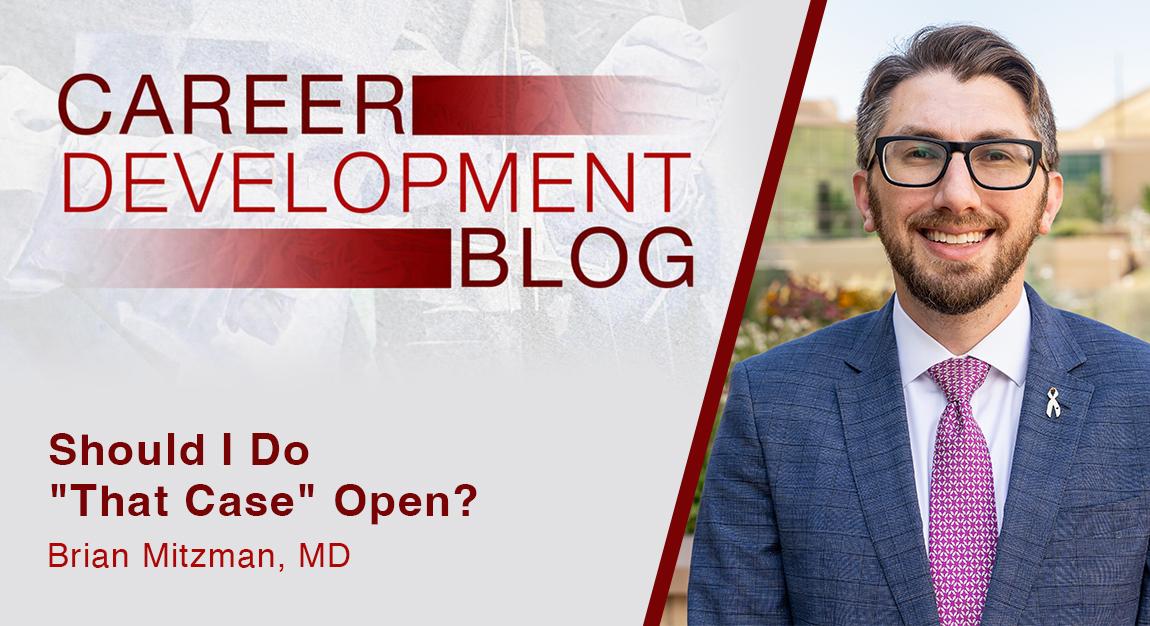- Early career surgeons should focus on consistent, safe outcomes rather than trying to impress with minimally invasive approaches. Reputation is built on reliability, not style.
- Choosing to convert or start open isn’t failure—it’s good judgment that protects both patient safety and professional credibility.
- Select favorable cases to grow minimally invasive expertise, avoid high-risk situations that could define your career negatively, and rely on mentors and colleagues as safeguards.
You’ve finished the marathon of training, landed your first job, and now you’re standing at the operating room door, about to start building your career. The patient is on the table, the team is looking at you, and you start to have doubts: “Should I be doing this case open?”
It’s a deceptively simple question, but in your early years, the answer can shape your reputation for a long time to come.
Safety First: Your Reputation Depends on It
In the first few years of practice, your outcomes define you. Referring physicians are watching, partners are watching, and whether you realize it or not, future patients are watching, too.
Put bluntly, a complication will follow you farther than several small incisions will impress anyone. That means case selection matters more than showing off your robotic or VATS skills. Do the operation safely, get the patient home quickly, and build trust. The best marketing tool you have right now isn’t your technique—it’s your consistency.

When to Reach for Open
Open surgery isn’t a failure. It’s judgment. It’s your safety net. Some examples:
- Healthy patient, straightforward lobectomy → Great opportunity for a minimally invasive approach.
- Bulky, central tumor → Strong argument for open, depending on skill set.
- Redo thoracotomy with dense adhesions in an elderly patient → Better have that open tray ready
There is certainly no harm in starting with a scope and exploring the landscape. You may surprise yourself and be able to perform a large portion, if not all, in a minimally invasive manner. That said, you need to have healthy judgment on when conversion is appropriate.
As the case proceeds, ask yourself: if this case spirals, do I want to be fumbling with a stapler through a port, or do I want wide exposure and control? Nine times out of ten, your gut already knows the answer.
Building Minimally Invasive Skills—Deliberately
Of course, you didn’t train all those years on the robot or VATS to ignore it. Early career is the perfect time to grow your skills—but do it on the right patients.
Pick the middle lobe with a generous fissure. The well-circumscribed mediastinal mass. The patient with great lung function. These cases build muscle memory, efficiency, and team coordination. As you bank wins, you’ll feel more confident moving toward complexity. Even starting a case minimally invasive and then performing safe, controlled conversion is a win. It builds confidence and helps push both you and your team along the learning curve.
Think of it like baseball: you don’t start by swinging for the fences—you string together singles until you’re ready for the home run.
Avoiding “That Case”
Every institution has a story of that case. A new surgeon pushes too hard, gets in over their head, and has a catastrophic complication. Fair or not, that case defines them for years. Don’t be that case. Trust me—your colleagues will remember the surgeon who had the judgment to convert early or start open far more fondly than the one who stubbornly pressed on for “the minimally invasive win.”
Guardrails to Keep You Honest
Before each case, it helps to run through a few quick “gut checks.” Think of them as the rumble strips on the side of the highway—they keep you from drifting into trouble.
Do you have a clear bailout plan? Every minimally invasive case should start with an open plan in your back pocket. Ask yourself: if I run into bleeding, what’s my exposure going to look like? If the fissure is fused, how am I going to approach the dissection? If the answer is “I’ll figure it out when I get there,” that’s not a plan.
- Is the right help immediately available? Early in your career, the safety net isn’t just the thoracotomy tray—it’s also your partners. If you’re tackling a tough case, make sure someone experienced is in the building and knows you may call. Every surgeon has a story of phoning a colleague mid-case, and those moments often earn you respect, not judgment.
- Would my fellowship mentor tell me to open? This one’s simple. Picture your mentor standing behind you. Would they be nodding or raising an eyebrow? If it’s the latter, open. Mentors don’t haunt us for no reason—their instincts were built on scars, gray hair, and a few hard lessons. If you have PTSD from your time in training and have blocked out that phase of your life, don’t hesitate to pick up the phone and get a quick refresher. Your mentors will always be in your corner, long after you finish training.
- What’s the downside if things go wrong? Complications happen, but some are harder to come back from than others. A prolonged air leak is manageable. A major vascular injury in a hostile chest? That one can stay with you and your reputation for a long time.
- Would I still feel comfortable if this case ended up being the one everyone in the surgeon’s lounge talks about tomorrow?
If the thought makes your stomach drop, do the case open. Better to be known as the surgeon who “played it safe” than the one who “got burned.”
The truth is, your internal compass is usually right. If you’re asking yourself the question, you probably already know the safer answer. These guardrails just permit you to listen to that voice. As you progress in your career and develop a strong reputation, your risk tolerance will increase, and it is acceptable to tackle more difficult cases minimally invasively. Your own skill set will evolve to get out of trouble, and your entire reputation won’t be tarnished by a single intraoperative complication. Until then, be realistic with your abilities and available resources, which include senior partners. "More attendier" attendings.
Final Thoughts
So, should you do that case open? Sometimes, absolutely. Early in your career, prioritize safety over style. Grow your minimally invasive repertoire on favorable patients, and don’t be afraid to lean on open approaches when the stakes are high.
These principles apply just as strongly in cardiac surgery, where decisions between minimally invasive or open approaches can have lasting implications for patient safety, outcomes, and a surgeon’s professional reputation. Whether managing a complex valve repair or an emergent coronary case, the same rule holds true: safety and sound judgment must always come before style.
Soon enough, you’ll be the senior partner telling the new graduates: “When in doubt, open.” And they’ll thank you for it.
